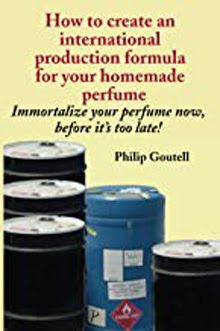Tuesday, June 11, 2019
Sketching out a new perfume
I use dropper bottles to sketch out a new perfume. Some say this isn't "professional". They point to articles they have read by authors (writers, not perfumers!) who have been allowed to watch top perfumers sketch out their new fragrances and they report that the perfumer calls to the technician, "bring me 0.001 grams of XYZ" or "0.0007 grams of QRV." If you were allowed to see their formulas you might see eight grams of one aroma material being used and 0.0008 grams of another. They have sketched out their formula by weight. So are dropper bottles just for hobbyist, amateurs, and school children? Take a closer look.
If you want to develop a fragrance of your own you will not be able to call a technician to bring you very small amounts of some material you want to use. Why? Because the precision balance needed to weight these small amounts costs terns of thousands of dollars. And then you would need some way to transport these materials from their storage containers to your weighing equipment and then to your test tube or mixing pot, all without spilling the tiniest fraction of a microgram. This work requires sophisticated, expensive laboratory equipment. Don't let these realities discourage you.
You can create fully professional fragrances starting with a sketch you've made with drops from dropper bottles. To do this successfully you must understand how to use dropper bottles. You must understand how to work with materials that are not liquids and thus must be transformed into liquids without changing their scent characteristics. You must learn how to add that "0.0007 grams" to your formula, even though you can't weight it. You have to understand that the way you squeeze your droppers is important and that drops are not a "standard" measurement. But even after you've mastered all these techniques and can repeat your dropper formula over and over again, you'll be stalled at this point without any way to go into commercial production unless you graduate to the next level.
The next level is where, in a sense, you rejoin those "professionals" with their high tech laboratory equipment. To attain this level you too must acquire some laboratory equipment but, if you are practical, you'll be able to purchase everything you need for less than the cost of front tires for your pickup truck. What is happening now is that you are converting your drops, which by now have been multiplied into easy to weight quantities, into grams. From this point forward it's all just measurements and mathematics and your results, the fragrance that you create, can be just as grand as any found at your local perfume counter.
So what are all these measurements and mathematics that can transform a simple "drops" formula into a production formula by which you can produce your fragrance by the gallon or by the drum? In fact they are all quite simple but also quite important. I have written about them and described them in detail in a book called Creating your own perfume from dropper bottles: Methods, mechanics, and mathematics. While detailing these techniques in writing, I've been developing a new fragrance using these techniques. The "juice" was bottled a month ago. Today I added alcohol and water. I can't reveal the name until I've bottled some and put it on the market which may not happen until September (2019). If I reveal the name now, my name won't be (trademark) protected so I must wait until it goes on sale. (If you don't understand why this is the case, read Naming Your Perfume And Protecting Your Name.)
If you have a good idea for a perfume and if you are willing to learn some basic techniques, there is no reason why you can't produce it.
Subscribe to:
Post Comments (Atom)


No comments:
Post a Comment